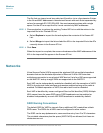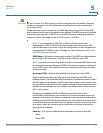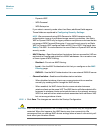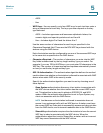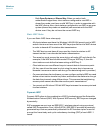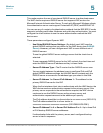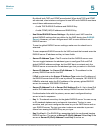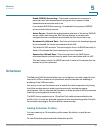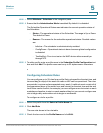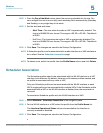
Wireless
Networks
Cisco Small Business WAP121 and WAP321 Wireless-N Access Point with PoE 81
5
• Key—The shared secret key that the WAP device uses to authenticate to
the primary RADIUS server.
You can use up to 63 standard alphanumeric and special characters. The
key is case sensitive and must match the key configured on the RADIUS
server. The text you enter is shown as asterisks.
• Key 2 to Key 4—The RADIUS key associated with the configured backup
RADIUS servers. The server at Server IP (IPv6) Address 2 uses Key 2, the
server at Server IP (IPv6) Address 3 uses Key 3, and so on.
• Enable RADIUS Accounting—Enables tracking and measuring of the
resources a particular user has consumed, such as system time, amount of
data transmitted and received, and so on.
If you enable RADIUS accounting, it is enabled for the primary RADIUS
server and all backup servers.
• Active Server—Enables administratively selecting the active RADIUS
server, rather than having the WAP device attempt to contact each
configured server in sequence and choose the first server that is up.
• Broadcast Key Refresh Rate—The interval at which the broadcast (group)
key is refreshed for clients associated with this VAP.
The default is 300. The valid range is from 0 to 86400 seconds. A value of 0
indicates that the broadcast key is not refreshed.
• Session Key Refresh Rate—The interval at which the WAP device
refreshes session (unicast) keys for each client associated with the VAP.
The valid range is from 0 to 86400 seconds. A value of 0 indicates that the
broadcast key is not refreshed.
WPA Personal
WPA Personal is a Wi-Fi Alliance IEEE 802.11i standard, which includes AES-CCMP
and TKIP encryption. The Personal version of WPA uses a pre-shared key (PSK)
instead of using IEEE 802.1X and EAP as is used in the Enterprise WPA security
mode. The PSK is used for an initial check of credentials only. WPA Personal is also
referred to as WPA-PSK.
This security mode is backwards-compatible for wireless clients that support the
original WPA.
These parameters configure WPA Personal:
• WPA Versions—The types of client stations you want to support:



